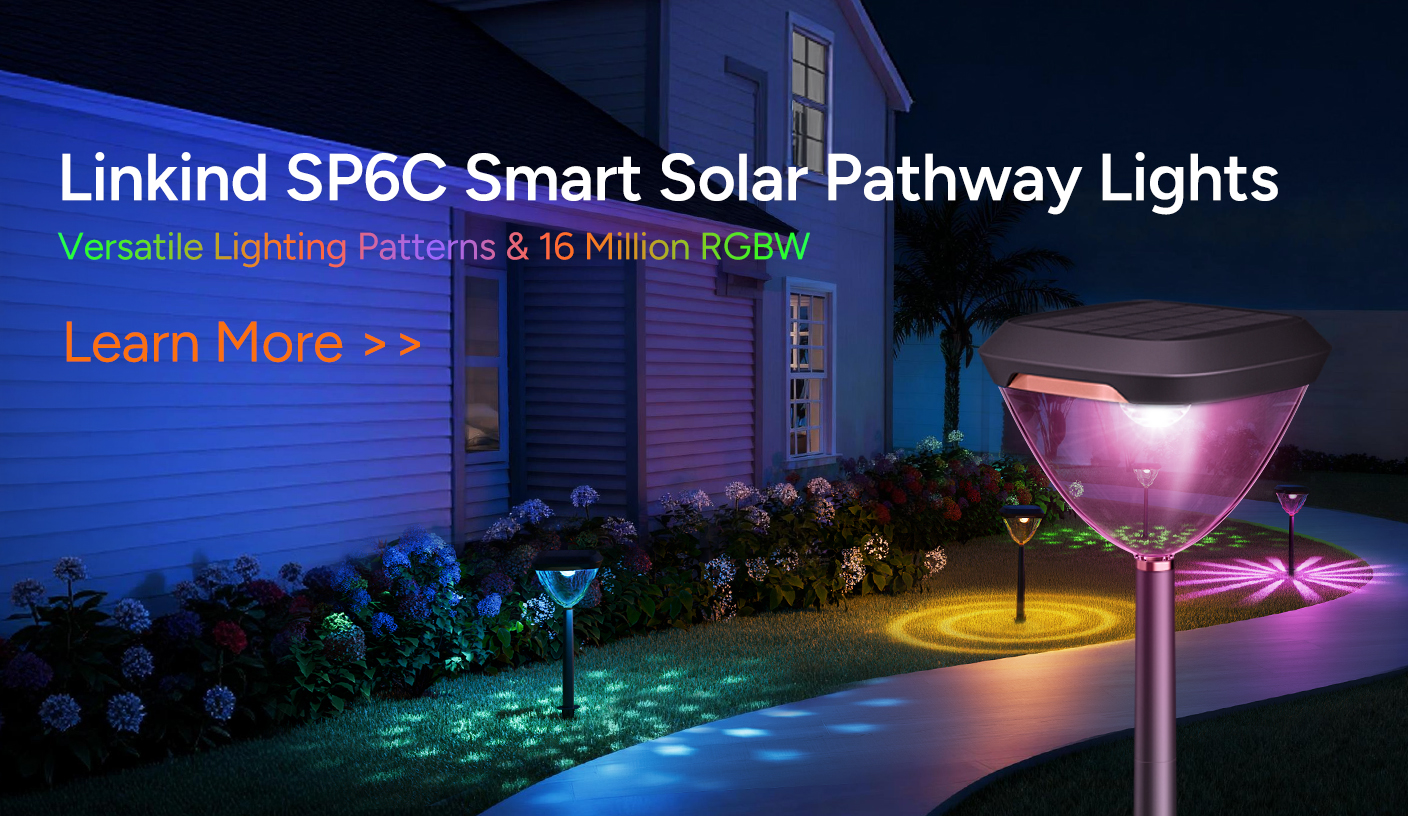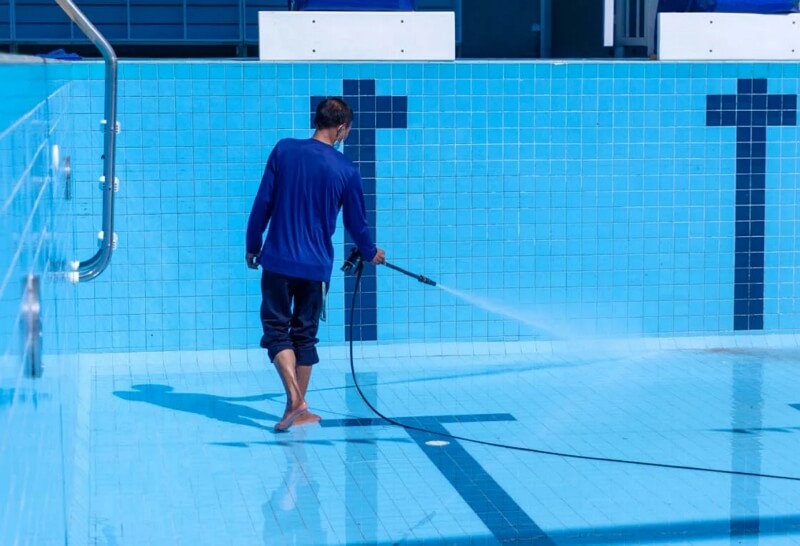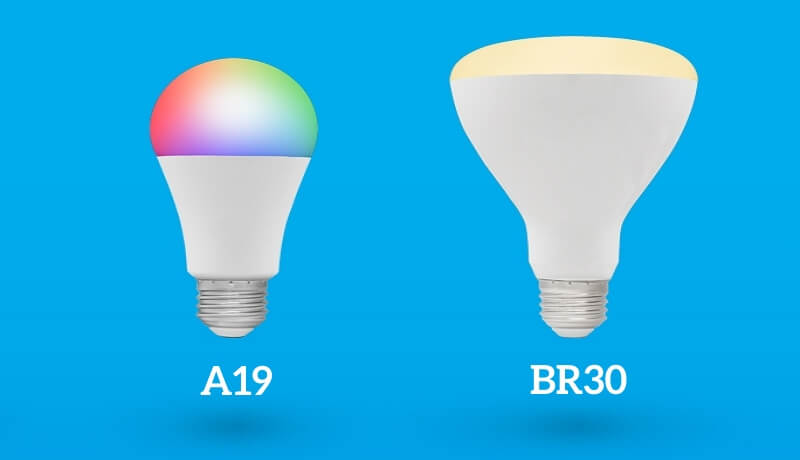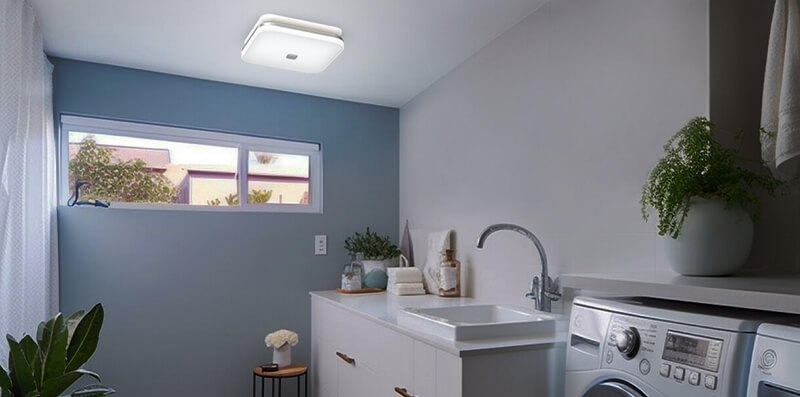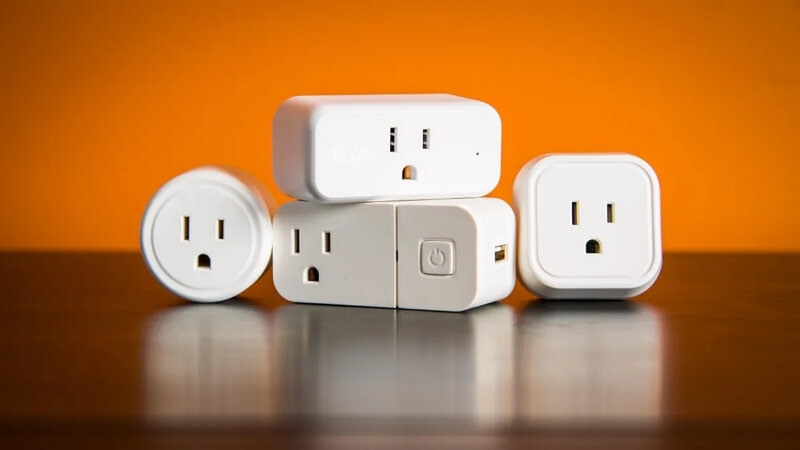In a world filled with environmental uncertainties, the air we breathe at home takes center stage in our pursuit of wellness. Enter air purifiers – the silent, yet powerful, allies committed to creating a sanctuary of clean air.
This guide aims to demystify air purifiers, providing insights into their benefits, basics, as well as buying suggestions.
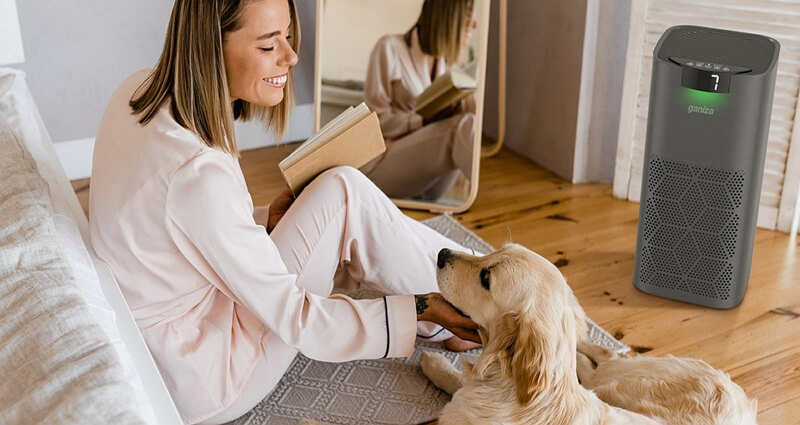

Part 1. Do You Need an Air Purifier?
Air purifiers offer numerous benefits and can be essential in various situations. Here are some scenarios where having an air purifier becomes crucial:
1. Allergies and Asthma
Individuals suffering from allergies or asthma can benefit significantly from air purifiers. These devices can capture and remove allergens like pollen, pet dander, and dust mites, providing relief from respiratory symptoms.
2. Urban Living
Residents of urban areas often face higher levels of air pollution due to vehicle emissions, industrial activities, and other pollutants. Air purifiers help reduce exposure to fine particulate matter and harmful gases, promoting better respiratory health.
3. Smoke and Odors
If you live in an area prone to wildfires or have neighbors who smoke, an air purifier with activated carbon filters can effectively remove smoke particles and odors, creating a cleaner and fresher indoor environment.


4. Pet Owners
Pet dander and odors are common allergens. An air purifier equipped with HEPA filters can capture airborne pet allergens, making it an excellent addition for households with pets.
5. Indoor Pollutants
Indoor pollutants, such as volatile organic compounds (VOCs) released from household products, cleaning agents, and paints, can negatively impact indoor air quality. Air purifiers with activated carbon filters can help eliminate these pollutants.
6. Mold and Mildew
High humidity levels can lead to the growth of mold and mildew. Air purifiers with HEPA filters can capture mold spores, preventing their spread and reducing the risk of respiratory issues.
7. Sleep Problems
Some air purifiers feature quiet operation and dimmed lights, making them suitable for bedrooms. Cleaner air can contribute to better sleep quality by reducing irritants that may disrupt sleep.
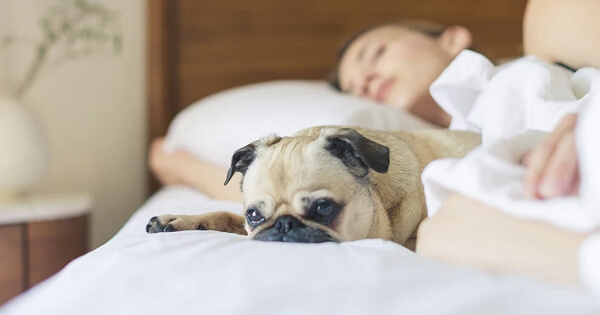

8. Children and the Elderly
Children and the elderly are often more vulnerable to the effects of poor air quality. Using air purifiers in spaces where they spend significant time can contribute to a healthier environment.
9. Home Renovation or Construction
During home renovations or construction, airborne particles and dust can be released into the air. Air purifiers can help minimize the impact of these particles, providing a cleaner living space.
Considering these scenarios, if you find yourself in any of these situations, an air purifier could be a valuable addition to your home, contributing to a healthier and more comfortable living environment.
Part 2. How Does an Air Purifier Work?
An air purifier works through a combination of different technologies designed to remove impurities and improve indoor air quality. Here's a more detailed explanation:
- Air Intake: The purifier pulls in the surrounding air.
- Filtration: Inside the purifier, there are filters like HEPA that catch tiny particles like dust and pollen. Activated carbon filters tackle odors.
- UV-C Light: Some purifiers use UV-C light to destroy harmful bacteria and viruses.
- Ionization: Others release negatively charged ions that make particles in the air heavy, causing them to fall.
- Ozone Generation (optional): A few purifiers generate ozone to neutralize odors and kill certain germs. Use caution with ozone generators.
- Clean Air Release: After the air is filtered and treated, the purifier releases clean air back into your space.
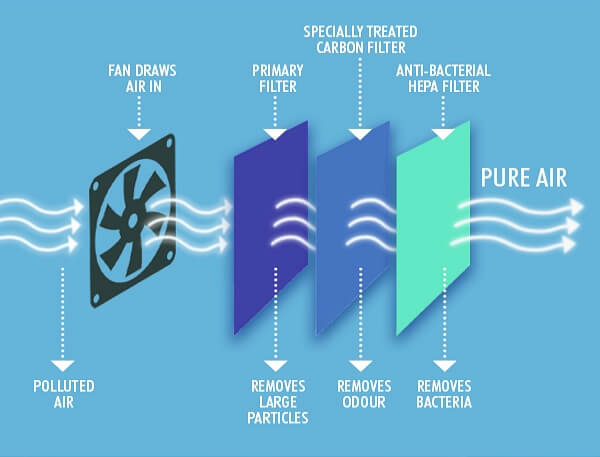

By combining these technologies, air purifiers can effectively reduce allergens, pollutants, and microorganisms, creating a healthier and more comfortable living environment. The specific mechanisms employed may vary among different types and brands of air purifiers.
Part 3. Types of Air Purifiers
There are several types of air purifiers, each utilizing different technologies to clean and improve indoor air quality. Here are the common types:
1. HEPA Air Purifiers
- Use High-Efficiency Particulate Air (HEPA) filters to capture small particles like dust, pollen, pet dander, and mold spores.
- Ideal for allergies, asthma, general particle removal.
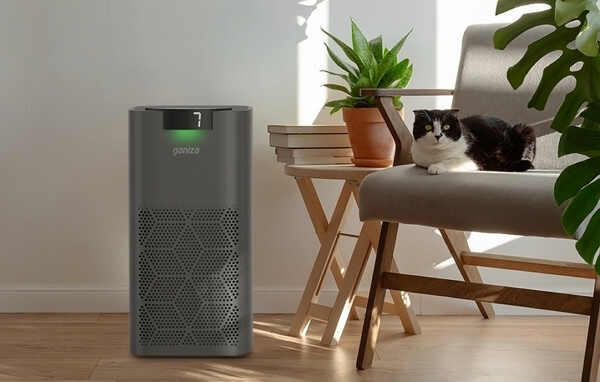

Products Recommended:
- AiDot Ganiza G200S Air Purifier for Large Room - Excellent performance with a 3-stage filtration system; efficient air purifying for large rooms.
- AiDot Welov P200 Pro Air Purifier for Home up to 1570 Ft² with Air Quality Monitor - Effortless hands-free voice control; tracks indoor air quality in real-time.
- AiDot Welov P100 H13 True HEPA Air Purifier for Bedroom - Adjustable night light; user-friendly with child lock; saves up to 50% energy.
2. Activated Carbon Air Purifiers
- Feature activated carbon filters to adsorb and neutralize odors, gases, and volatile organic compounds (VOCs).
- Ideal for removing odors and chemicals.
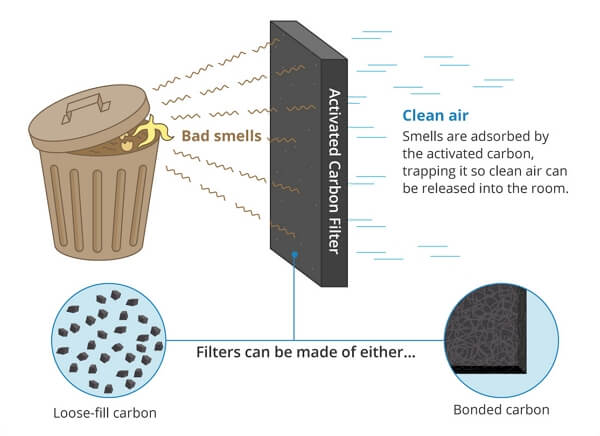

3. UV-C Light Air Purifiers
- Utilize ultraviolet (UV-C) light to destroy bacteria, viruses, and mold by disrupting their DNA.
- Ideal for germ and microorganism elimination.
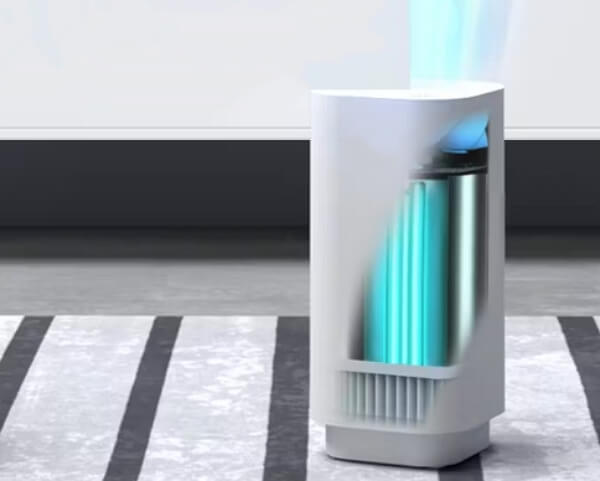

4. Ionizer Air Purifiers
- Release negatively charged ions into the air, causing particles to become heavy and fall.
- Ideal for reducing airborne particles.
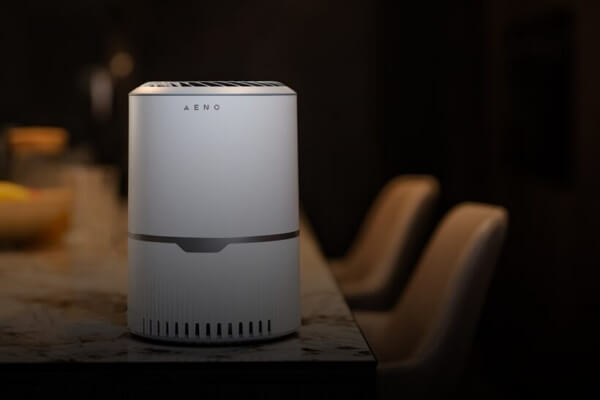

Part 4. Types of Filters Used by Air Purifiers
In the quest for healthier living spaces, air purifiers have emerged as indispensable allies, and at the heart of their efficiency lie specialized filters designed to tackle specific airborne challenges. Each filter serves a unique purpose, addressing distinct pollutants and allergens that may compromise the air quality within our homes.
The most common types of air purifier filters include:
- HEPA (High-Efficiency Particulate Air) Filters: Highly effective for capturing small particles like dust, pollen, and pet dander.
- Activated Carbon Filters: Effective in absorbing and neutralizing odors, gases, and volatile organic compounds (VOCs).
- Pre-Filters: Captures larger particles, prolonging the life of the main filter and enhancing overall efficiency.
- UV-C Light Technology: Destroys bacteria, viruses, and mold by disrupting their DNA.
- Ionizer or Electrostatic Filters: Releases negatively charged ions to reduce airborne particles.
Filters Recommended - Common Daily Use
- 3-Stage Filtration: Pre-Filter, H13 True HEPA Filter and Activated Carbon Filter
- Captures common airborne pollutants and allergens; neutralizes smoke and unwanted odors
- AiDot Ganiza G200S/G200 Air Purifier Replacement Filter
- AiDot Welov P200S/P200 Pro Air Purifier Replacement Filter
- AiDot Welov P100 Air Purifier Replacement Filter
- AiDot WELOV P100 Mini Air Purifier Replacement Filter
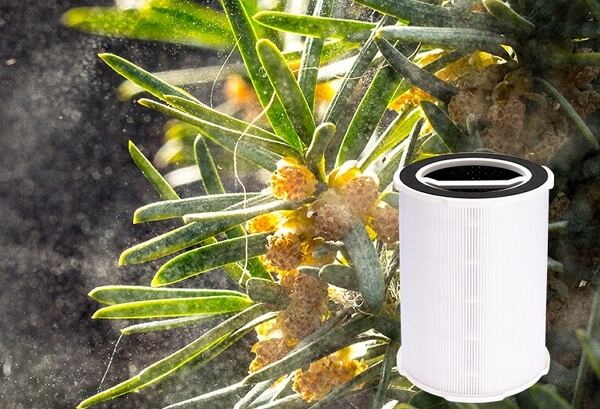

Filters Recommended - Pet Care
- 3-Stage Filtration: Pre-Filter, enhanced H13 True HEPA Filter and Activated Carbon Filter
- Customized for pet hair, dander and odor; filters allergens and absorbs unwanted odors
- AiDot Ganiza G200S/G200 Air Purifier Replacement Filter - Pet Care
- AiDot Welov P200S/P200 Pro Air Purifier Replacement Filter - Pet Care
- AiDot Welov P100 Air Purifier Replacement Filter - Pet Care
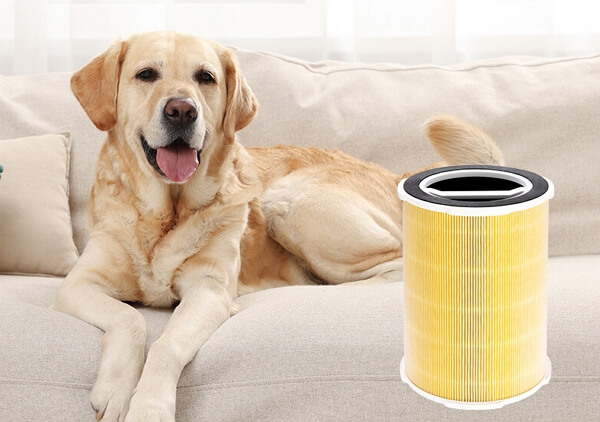

Filters Recommended - Toxin Absorption
- 3-Stage Filtration: Pre-Filter, H13 True HEPA Filter and double-layer Activated Carbon Filter
- Specially designed for new homes with formaldehyde; neutralizes toxins, wildfire smoke, VOCs, and pollutant gases
- AiDot Ganiza G200S/G200 Air Purifier Replacement Filter - Smoke Absorption
- AiDot Welov P200S/P200 Pro Air Purifier Replacement Filter - Smoke Absorption
- AiDot Welov P100 Air Purifier Replacement Filter - Smoke Absorption
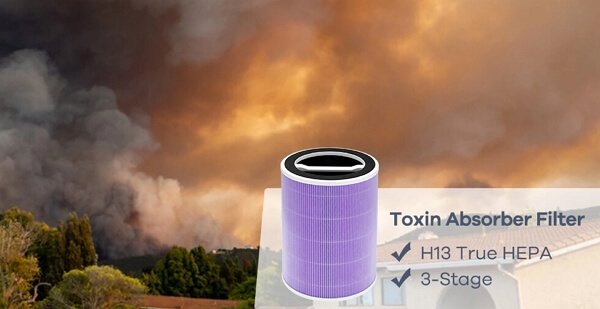

Part 5. More Basics about Air Purifier
1. CADR
CADR (Clean Air Delivery Rate) measures the volume of clean air delivered by an air purifier per minute. It is expressed in cubic feet per minute (CFM) and assessed for specific particle sizes such as dust, pollen, and smoke.
A higher CADR indicates faster and more efficient removal of airborne particles. It is crucial to choose a purifier with a CADR that matches the size of the room where it will be used.
2. HEPA Filters
HEPA (High-Efficiency Particulate Air) filters are designed to capture particles as small as 0.3 microns with a high-efficiency rate of 99.97%.
HEPA filters are highly effective in trapping common allergens like dust mites, pollen, pet dander, and mold spores. Ensure that the air purifier uses genuine HEPA filters for optimal performance.
3. Noise Level
Noise level is measured in decibels (dB) and represents the sound produced by the air purifier during operation.
Lower noise levels are preferable, especially for bedrooms or quiet spaces. Look for purifiers with noise levels below 50 dB for a more peaceful experience.
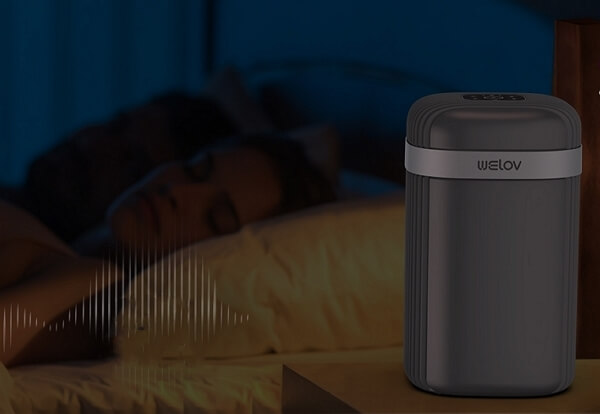

Products Recommended - Air Purifiers with Super Quiet Sleep Mode
4. Room Coverage
Room coverage specifies the square footage an air purifier can effectively clean. It's advised to choose an air purifier with room coverage that matches or slightly exceeds the square footage of the room. This ensures optimal purification for the designated space.
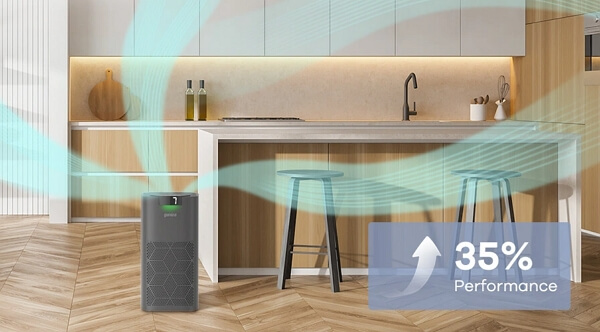

Products Recommended - Efficient Air Purification for Large Room
Part 6. What to Look Out for When Buying Air Purifier?
- Purpose and Needs: Define your primary goal (allergens, odors, smoke) for targeted purification.
- Room Size: Consider the square footage to match the purifier's room coverage.
- CADR Ratings: Check Clean Air Delivery Rate for efficient pollutant removal.
- Filter Type: Choose filters based on targeted pollutants (HEPA for allergens, activated carbon for odors).
- Noise Level: Opt for lower decibel levels, especially for bedrooms or quiet spaces.
- Filter Replacement Costs: Factor in frequency and cost of filter replacements.
- Energy Efficiency: Look for ENERGY STAR-rated models for long-term cost savings.
- Additional Features: Consider air quality sensors, timer settings, and smart capabilities.
- Maintenance Requirements: Assess the ease of maintenance for long-term convenience.
- Brand Reputation and Reviews: Research brand reputation and read user reviews for reliable performance.
Part 6. How to Get the Most Out of Your Air Purifier
- Placement Matters: Position the air purifier in a central location for better air circulation. Avoid obstructing airflow by placing it near walls or furniture.
- Regular Filter Maintenance: Adhere to the recommended filter replacement schedule. Clean or replace filters as instructed to maintain peak filtration efficiency.
- Proper Sizing: Choose an air purifier with the right room coverage for the space. Using an appropriately sized unit ensures effective purification.
- Keep Doors and Windows Closed: Minimize the introduction of external pollutants by keeping doors and windows closed when the air purifier is in use.
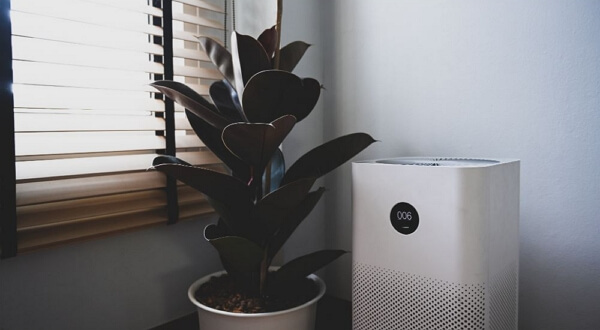

- Run Continuously: For continuous air purification, run the purifier consistently, especially in rooms where you spend a significant amount of time.
- Maintain a Clean Environment: Regularly dust and vacuum your living space to reduce the load on the air purifier's filters and enhance its overall efficiency.
- Control Indoor Sources: Manage indoor sources of pollution, such as smoking or using certain chemicals. The cleaner the indoor environment, the more effective the air purifier will be.
- Monitor Air Quality: Pay attention to air quality indicators if your purifier has them. Adjust settings accordingly to respond to changes in indoor air quality.
- Regular Unit Cleaning: Periodically clean the exterior of the air purifier to prevent dust buildup, ensuring unrestricted airflow.
- Adjust Settings Based on Needs: Customize settings based on specific needs. Increase fan speed during peak pollutant times or use quieter settings for nighttime operation.












